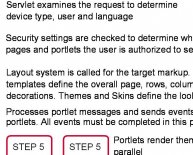
Behavioral Tests
The primary goal of the Human Connectome Project is to understand the typical patterns of structural and functional connectivity in the healthy adult human brain. However, as we attempt to define "typical, " we know that there are important individual differences in such patterns of connectivity even among persons with no diagnosable neurological or psychiatric disorders. One clue as to the importance of these individual differences may lie in their relationship to behavior.
Why is behavioral testing useful?
There is increasing evidence that these individual differences in brain connectivity are associated with variability in important cognitive and behavioral functions that constrain real world function. For example, higher IQ among healthy adults is associated with more effective and more efficient connectivity in the human brain. As another example, developmental research suggests that maturation of functional and structural networks in the human brain contributes to improvements in cognitive and emotional function as children grow older. Thus, measuring behavior while also mapping these structural and functional networks in our participants provides an important set of data that can be used to help understand variations in "typical" brain function.
How will we use the behavioral data?
The data collected on healthy adults in the HCP will provide an invaluable starting point for future studies that examine how variation in human structural and functional connectivity play a role in both adult and child neurological and psychiatric disorders. These disorders represent an enormous public health burden and a huge economic cost (e.g., estimated $320 billion annually in the U.S.).
An extensive empirical literature demonstrates impairments in both structural and functional connectivity in psychiatric disorders such as autism, schizophrenia, bipolar disorder, and addiction; neurological disorders such as Tourette syndrome and multiple sclerosis; and the cognitive consequences of prematurity. The data collected in the HCP will allow us to understand how variation in human brain connectivity relates to variation in behavior, memory, thinking and emotion. In turn, this will provide clues as to how impairments in brain connectivity contribute to the cognitive, emotional and behavioral symptoms that define these psychiatric and neurological illnesses.
How will we measure behavior?
To better understand the relationship between brain connectivity and behavior, we will use a reliable and well-validated battery of measures that assess a wide range of human functions. The core of our battery is comprised of the tools and methods developed by the NIH Toolbox for Assessment of Neurological and Behavioral function. This Toolbox, funded by the NIH Blueprint, provides an efficient and comprehensive battery of assessment tools for projects such as the Human Connectome Project.
The NIH Toolbox includes measures of cognitive, emotional, motor and sensory processes in healthy individuals. These measures were selected using a consensus building process, and were developed and validated using state-of-the-art assessment methodologies, including item response theory (IRT) and Computer Adaptive Testing (CAT).
For the HCP, we are adding measures of five important areas not fully covered by the Toolbox:
- Additional measures of visual processing;
- Personality and adaptive function;
- Delay discounting (as a measure of self-regulation and neuroeconomic decision making);
- Fluid intelligence (as a measure of higher order relational reasoning); and
- Behavioral measures of emotion processing.

















